One of the dreams Adam Frisby, a key core developer of OpenSim and CTO of Sine Wave Company, is that OpenSim will be the platform to make virtual concerts a mass phenomena.
Sine Wave Company is already deeply involved in developing the creative relationship between rock and virtual worlds by developing sophisticated dance animations (click to see video) using motion capture. They are working with Bravado, the merchandising division of Universal Music Group and 12 rock giants:
Slipknot, The Ramones, Trivium, Iron Maiden, Bullet for my Valentine, Trivium and Cradle of Filth are among the bands to launch their official merchandising range in Second Life at Rock Vault;
Already Sine Wave has developed sharding software to produce large scale events in Second Life. But this is, perhaps, just the tip of the iceberg in terms of the size potential of future audiences when the full power of OpenSim for hosting large scale events is unleashed.
There will be an invitation only concert for 100-400 during Virtual Worlds 2008 featuring Antigone – a taste of what is to come.
Open Source Virtual Worlds at VW 2008
Adam Frisby of OpenSim will present on the state of play in OpenSim as one of the facilitators of the “Open Source Virtual Worlds” round table, 2.30pm on Friday, April 4th that is part of the new Enterprise track at VW 2008. Round table facilitators from RealXtend, Sun’s Project Wonderland, and Qwaq will discuss their open source virtual world platforms, with each facilitator focusing on a particular topic in relation to their platform. This will be an excellent opportunity to learn more about the diversity of open source virtual world platforms.
Adam will talk about ease of licensing and business adoption in OpenSim. Jani Pirkola of RealXtend will present their ground breaking work on Avatar 2.0 – click on the screen shot below to see the video demo.
Remy Malan from Qwaq will introduce Qwaq and facilitate a discussion on collaboration. And, Nicole Yankelovich of Sun Microsystems will present Project Wonderland and facilitate a discussion on audio and telephone integration.
Enterprise Applications in Open Source Virtual Worlds
Remy Malan will be on two other round tables on Sunday also. And there is also an opportunity to see enterprise applications in Sun’s Project Wonderland and OpenSim at VW 2008 on Thursday, April 3rd, 2.30pm in, “Enterprise Applications for Virtual Worlds: 3D Command and Data Centers for Network Operations (“Green Data Centers”), Energy & Facility Management, Building Automation, and Data Visualization.”
“Enterprise Applications for Virtual Worlds,” will discuss the Eolus project of Oliver Goh (Implenia Global Solutions), and Oliver’s work on facility management, and “green data centers” with Michael Osias, and the 3D data visualization by Ben Lindquist of GreenPhosphor in Sun’s Project Wonderland (sceenshot below) and Second Life. It will be an opportunity learn more about how 3D command and control centers and 3D data visualization may be some of the “killer apps” of the next generation internet.
Virtual Network Operation Center now operational in OpenSim
Michael Osias’s Virtual Network Operation center is now fully operational on OpenSim.
Network Operation Centers are at the heart of all large enterprises and the 3D experience brings much to the table in the exacting task of running complex systems for operations that can tolerate zero down time. Something as simple a being able to remotely collaborate with other systems engineers to say this server here, *point at physical machine* is having problems, and needs physical replacement is invaluable.
It’s easier to explain and show visually than it is to give a reference number, look it up, and then replace it with another machine from over ‘there’
There is a big advantage to doing it in a web page because you can see the layout of the data center in realtime.
Below is a little scenario to illustrate this compiled from screen shots of Michael Osias of IBM’s already operational VNOC in OpenSim.
A typical event in the life of a systems administrator begins with an alert occasionally received at 2AM.
Now, imagine this. You VPN in to your VNOC 3D world and fly to the control tower -

- where you quickly determine which data center the alert is coming from. Following the data stream as you fly to the Data Center.

You land and approach the local admin and inquire about the status. The local admin points out the area of trouble -

- and you check the alert screen which informs you as to the exact problem.
You outline the remedial action to your local admin -
- and designate another server to rebuild as a replacement -
until broken hardware can be replaced. Total time for you: 2.3 minutes -
as you return to the control tower -
and close out the alert.
Time for more sleep!
Shengri La breaks the 15,000 Prim Limit
Other developments to watch on OpenSim come from Shenlei Flasheart (Shenlei Winkler in RL), CEO of the Fashion Research Institute and visionary of Shengri La a utopian micronation in Second Life. Shenlei writes on March 8th:
We did it. Tonight we broke the 15,000 prim limit that is artificially imposed on Second Life sims, and we did it, if I may say so, with quite a degree of aplomb and more than a bit of beauty and only a few screams & cries on my part.
Shenlei explained to me that FRI is a business partner and customer of IBM, plus, we have a research agreement with them to develop new technologies for the apparel industry, a $1.7 trillion industry:
Our Team Leader is Zha Ewry (David Levine); my PI on the research side is Rez Tone (Dr. Mike Pitman); our script wizard is Dale Innis; and of course, for the IBM OpenSim effort is Neas Bade. We’re working with IBM to harden Opensim as an enterprise-ready solution for a number of different reasons not the least of which is the fact that IBM can handle issues of scalability, interoperability, and data security. Right now, we’re testing the IBM OpenSim installation ShengriLa Spirit so that we can really stress the platform in a controlled environment. This offers feedback to our development team in a codified way. The fact that I insist that it be beautiful just aligns with the Fashion Research Institute’s overall vision.
Linden Lab Release the Capabilities Server Open Source
For a technical explanation of the role the “Capabilities” server is designed to take in the Linden Lab vision of an open grid read Christian Scholz’s (Tao Takashi’s blog). I will write more in another post as I have already heard a variety of opinions on the implications of the “capabilities” approach which will be a key to the new Second Life Grid Architecture which as Tao Takashi points out:
is all about interoperability you might also want to mix parts implemented by different people inside your installation. Like the asset server could come from person X, the IM server from party Y and so on. All these parts would need to handle authorization themselves and somehow connect to the session host which knows about permissions. Or to some database. So in this case capabilities are probably easier for plugging a system together.
UgoSim
While I have spent most of this post focusing on large scale applications in OpenSim, I would like to add that I now have a UgoSim (total cost $100 per month) and, for the moment at least, it is a source of great delight for Ugotrade junior (eight yrs old). He has been testing out the new terrain tools that Adam has been posting on. Ugotrade Jr. has also built a tree house at the top of this strange mountain in the center of Ugosim that he wants me to keep under wraps for the moment. But, he is very happy he doesn’t have to wait to be allowed on teen grid to become an expert terraformer and builder. Club Penguin got the thumbs down from him a long while ago!


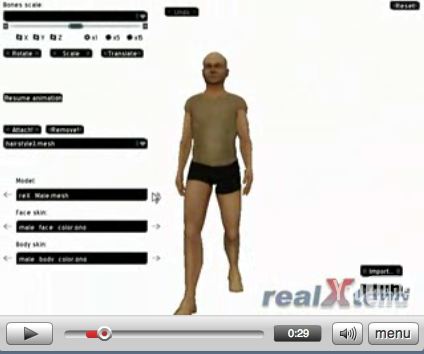
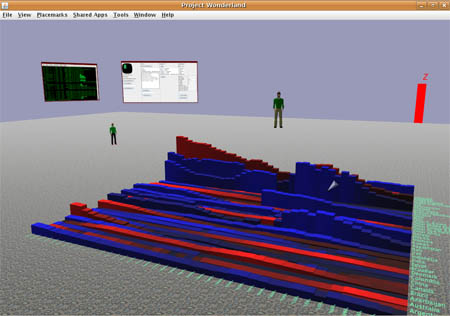







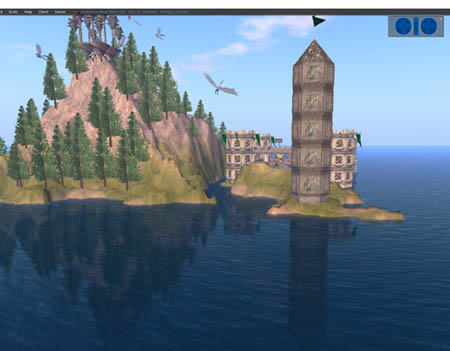
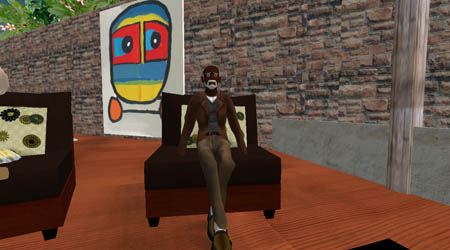
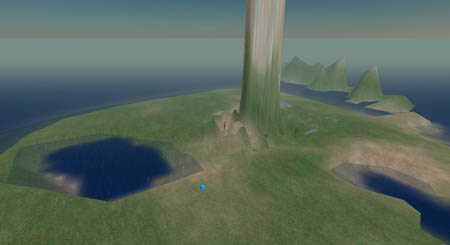
Tue, Mar 25, 2008